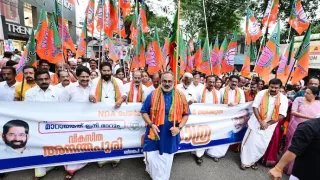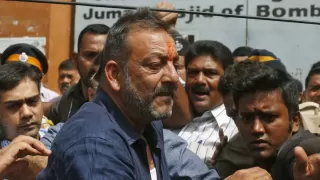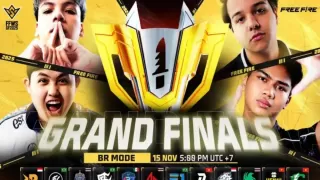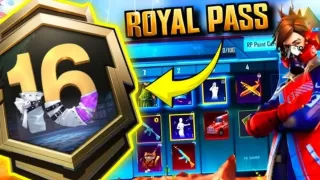Shooter games remain one of the strongest pillars of mobile entertainment, combining reflex-driven action, tactical decision-making, and deep social engagement. Whether it’s a frantic 100-player battle royale or a short, explosive team deathmatch, top shooter titles set the bar for retention, monetization, and community building. For developers studying this space, these games offer a masterclass in what works — from matchmaking and progression systems to technical optimization and content cadence.
This article reorders and condenses proven lessons from five of the most influential mobile shooters, arranged from five to one in increasing popularity. Each section preserves the original insights while keeping the focus practical and developer-first. If you’re designing a shooter or iterating on an existing project, these examples reveal concrete design patterns and business strategies that consistently deliver player engagement and revenue.
Read on for a quick breakdown of Knives Out, Brawl Stars, Free Fire, Call of Duty: Mobile, and PUBG Mobile — plus distilled takeaways you can apply directly to development, liveops, and growth.
5. Knives Out
Knives Out delivers a classic 100-player survival experience with an emphasis on scavenging, survival strategy, and map mastery. The game’s layered map design, priority items such as helmets and backpacks, and varied environmental hazards encourage exploration and emergent play. NetEase’s approach blends survival urgency with accessible mechanics, giving players both strategic depth and immediate action.
For developers, Knives Out demonstrates how thoughtful map variety and small but meaningful features—like a wingsuit or isolated island regions connected by bridges—create tactical diversity. Customizable controls and robust server management are crucial: responsive controls make survival games feel fair, while multiple server regions reduce latency and queue friction. Lastly, lightweight cosmetic systems and priority-item economies (items that feel essential but remain balanced) add progression without hurting competitive fairness.
4. Brawl Stars
Brawl Stars stands out as a fast, approachable third-person team shooter with a surprising amount of depth. Each brawler offers distinct playstyles, and a variety of concise game modes keeps sessions short and addictive. The title’s emphasis on rapid matches, character-based progression, and seasonal content creates a rhythm that encourages repeated play throughout the day.
Key lessons for developers include the power of diverse game modes: offering multiple small-form experiences extends appeal and keeps players engaged over time. Skill progression matters—layered upgrades and unique brawler abilities create long-term goals. Social integration through clubs (guilds) and team matchmaking fosters community and turns casual players into long-term users. Brawl Stars also highlights the importance of onboarding—clear tutorials and an early reward flow reduce churn—and safe practice environments, such as training arenas, help players explore mechanics without pressure.
3. Free Fire
Free Fire carved its niche by optimizing battle royale for a wide range of devices while focusing on accessibility and fast-paced gameplay. Designed for 50-player matches and quick sessions, Free Fire pairs simplified mechanics with deep event-driven content. Features like the Guild system, Luck Royale, and cosmetic collections keep social engagement high and provide repeated monetization touchpoints.
From a developer’s perspective, Free Fire illustrates how adaptive gameplay and simplified controls can expand your addressable market—especially in regions with lower-spec devices. A balanced loot and risk-reward system keeps matches tense and meaningful. Cosmetic customization is essential: it gives players identity and provides non-pay-to-win monetization. Finally, building meaningful community features, such as guilds and live events, can take casual sessions and convert them into sticky social routines.
2. Call of Duty: Mobile
Call of Duty: Mobile successfully translates the console FPS feel to touchscreens, offering deep weapon customization, loadouts, and a variety of competitive modes. The title combines quick multiplayer skirmishes with a fully featured Battle Royale, providing both short-form and long-form engagement. Its Gunsmith system and loadout customization enable players to express playstyle while opening numerous cosmetic monetization channels.
The lessons here are clear: deep customization increases player investment and monetization potential, while varied reward systems (killstreaks, scorestreaks, short-term objectives) create satisfying session goals. Multi-mode support lets you capture different player archetypes under one title and increases lifetime value. Community building—through clans, leaderboards, and seasonal events—drives retention. Onboarding remains essential: a franchise pedigree helps, but new players still need guided starts, beginner-friendly playlists, and approachable reward pathways.
1. PUBG Mobile
PUBG Mobile redefined the mobile shooter landscape by bringing realistic ballistic behaviour, expansive maps, vehicle mechanics, and survivability to smartphones. It set expectations for fidelity, environmental interactivity, and competitive balance. PUBG’s weapon handling, recoil patterns, and audio design created a tactile feeling of skill that players rewarded with loyalty and long play sessions.
For developers, PUBG Mobile highlights several non-negotiables: innovation in core mechanics (unique movement, weapon variety, and interactive environments), a monetization strategy that respects balance (cosmetic-only monetization and meaningful seasonal content), and a timing strategy that leverages early market opportunities. Matchmaking that pairs similar-skill players improves long-term retention, while rigorous technical optimization across device classes extends reach. Continuous liveops—events, collaborations, seasonal content—keep the ecosystem lively and financially sustainable.
5 Key Trends for Shooter Mobile Games
Across these five titles, recurring patterns emerge that any serious game studio should consider. First, diverse game modes are essential to broaden appeal; offering both short-form and long-form sessions captures casual and core players. Second, deep customization—especially weapons, skins, and loadouts—drives player identity and monetization without undermining competitive integrity.
Third, strong community and social features transform a single-player habit into a social ritual; guilds, clans, and in-match social tools are powerful retention levers. Fourth, reward and progression systems that combine short-term goals with long-term milestones boost session frequency and lifetime value. Finally, prioritizing accessibility and performance allows titles to succeed in emerging markets where device variety is high—sometimes the difference between niche success and global reach.
Implementing these lessons requires close collaboration between design, engineering, liveops, and analytics teams. Balance and iteration are key: mechanics must be tested, telemetry must be monitored, and live events must be adjusted based on player behavior. The most successful shooters mix bold design choices with careful live management and community-first strategies.
Whether you’re building a small indie shooter or planning a global live-service title, these five games offer a blueprint for success. Apply their lessons thoughtfully, measure impact with robust metrics, and keep the player experience at the center of every decision—so your shooter can become the next staple of the mobile gaming ecosystem.
Also Read: Top 10 Most Played Mobile Games of 2025 by Player Count




























